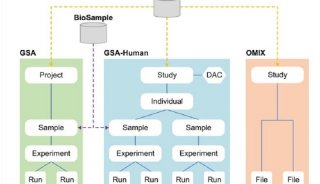BTG family proteins and cell cycle regulation

BTG2 is found to be one of the immediate early genes up-regulated by neural growth factor (NGF) and epidermal growth factor (EGF). Its transcriptional level is also up-regulated by p53, gamma radiation, adriamycin and UV treatment of cells. BTG seems to be important for the cell cycle progression as BTG2 is preferentially expressed in quiescent cells. Over-expression of BTG2 decreases the growth of NIH3T3 cells and induces neuronal differentiation and prevention apoptosis of PC12 cells. Molecularly, BTG2 expression induces hypophosphorylation of RB and G1 arrest which could be rescued by overexpression of cyclin D1. BTG1 and BTG2 interact with PRMT1 (predominant cellular arginine N-methyltransferase) and increase PRMT1 methyltransferase activity. Box C domain in BTG1 and 2 are responsible for the interaction. Box C domain alone acts as a dominant negative which blocks PRMT1 activity. PRMT1 activity is essential for NGF induced PC12 differentiation, and blocking PRMT1 by Box C domain of BTG1 or 2 induces apoptosis. In addition, BTG2 and HoxB9 interaction enhances the transcription of Hoxb9. Lastly, association of BTG2 and BTG1 with Caf1 is also reported to modulates transcriptional activity of CAF1.
Contributor: Yen-Liang Chen, PhD
REFERENCES: Berhet, C. et al. (2002). Interaction of PRMT1 with BTG/TOB proteins in cell signalling: molecular analysis and functional aspects. Genes Cells 7, 29-39. Cortes, U. et al. (2000). BTG gene expression in the p53-dependent and -independent cellular response to DNA damage. Mol Carcinog 27, 57-64. el-Ghissassi, F. et al. (2002). BTG2(TIS21/PC3) induces neuronal differentiation and prevents apoptosis of terminally differentiated PC12 cells. Oncogene 21, 6772-6778. Guardavaccaro, D. et al. (2000). Arrest of G(1)-S progression by the p53-inducible gene PC3 is Rb dependent and relies on the inhibition of cyclin D1 transcription. Mol Cell Biol 20, 1797-1815. Matsuda, S. et al. (2001). In search of a function for the TIS21/PC3/BTG1/TOB family. FEBS Lett 497, 67-72. Morel, A. P. et al. (2003). BTG2 antiproliferative protein interacts with the human CCR4 complex existing in vivo in three cell-cycle-regulated forms. J Cell Sci 116, 2929-2936. Prevot, D. et al. (2000). The leukemia-associated protein Btg1 and the p53-regulated protein Btg2 interact with the homeoprotein Hoxb9 and enhance its transcriptional activation. J Biol Chem 275, 147-153.
-
科技前沿









